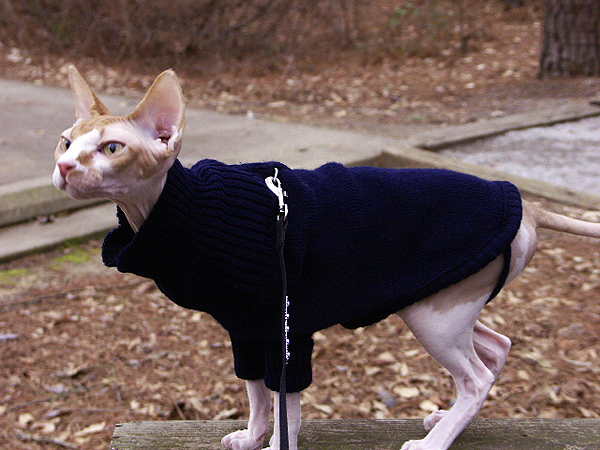
What's important to note for Devon and Sphynx owners is that within THESE breeds this drug can do one of three things:
1. Cause non-diagnosed cardiomyopathy (HCM) in a cat to progress
2. Due to the drug lowering the *heart rate, it can cause a cat to go into congestive heart failure (CHF)
3. Advance an undiagnosed HCM so that another dose of Ketamine may cause death
What is Ketamine?
Ketamine is a widely used dissociative drug. It has a noted history of causing an increase in blood pressure, a rough recovery, and, as is referenced in numerous resources, can cause cardiac arrest leading to congestive heart failure in breeds – particularly those that may have the spasticity gene.
Ketamine is commonly used as an induction agent for children and the elderly, and is noted on the US Drug Enforcement Agency.
What does "dissociative" mean?
Ketamine as a street drug - vet clinics beware: -- resourced from DEA (US Drug Enforcement Agency)
Street terms for Ketamine: jet, super acid, Special "K", green, K, cat Valium.
Ketamine comes in a clear liquid and a white or off-white powder form.
Ketamine is a tranquilizer most commonly used on animals. The liquid form can be injected, consumed in drinks, or added to smokable materials. The powder form can be used for injection when dissolved.
In certain areas, Ketamine is being injected intramuscularly. Ketamine, along with the other "club drugs," has become popular among teens and young adults at dance clubs and "raves."
It is marketed as a dissociative general anesthetic for human and veterinary use, the only known source of Ketamine is via diversion of pharmaceutical products.
Recent press reports indicate that a significant number of veterinary clinics are being robbed specifically for their Ketamine stock.
DEA reporting indicates that a major source of Ketamine in the United States is product diverted from pharmacies in Mexico. Prices average $20 to $25 per dosage unit.
Higher doses produce an effect referred to as "K-Hole," an "out of body," or "near-death" experience.
Use of the drug can cause delirium, amnesia, depression, and long-term memory and cognitive difficulties. Due to its dissociative effect, it is reportedly used as a date-rape drug.
Scientific/Medical: -- resourced from Wikipedia
From PUBMED:
Ketamine Death
http://www.pubmedcentral.nih.gov/pagerender.fcgi?artid=1481214&pageindex=4#page
-----------------------------------------------------------------------------
There are numerous other anesthesias that your vet should be aware of, and suggest as an alternative if that question is raised. Many of these are non-dissociative and do not cause an increase in blood pressure and do not have the rough recovery that is noted over and again with Ketamine, or Ketamine derivitives such as Telazol and the gas Haloflurane.
Isoflurane or Sevoflurane are extremely common examples of gases that can be used instead of Ketamine or like agents.
Please note: Anesthetics agents increasing the risk for death in Rex and Sphynx are:
- Dissociative: Ketamine (Imalgene®, Clorketam®, Zoletil®)
- Volatile: Halothane
Reference:
Dr. Mike Richards, DVM – Cobbs Creek, VA Matthews Veterinary Clinic
“Ketamine causes hypertension during anesthetic recovery and it is possible that the detrimental effects attributed to Ketamine may be due primarily to cases of undiagnosed cardiomyopathy in cats undergoing anesthetic procedures. These cats would be especially sensitive to hypertension and the increase in blood pressure induced by Ketamine is supposed to be pretty significant in some cats.”
Additionally he wrote:
“For a long time I have heard reports of episodes of pulmonary edema and/or heart failure following anesthesia in cats. There has been some concern among veterinarians over the potential for Ketamine, a commonly used anesthetic agent, to cause episodes of pulmonary edema. Ketamine appears to cause hypertension during the recovery period in many cats. If the cat has pre-existing cardiomyopathy this could lead to a sudden worsening of the cardiomyopathy leading to pulmonary edema and death, if the cardiomyopathy cannot be brought under control with medications. There is some possibility that this effect could occur even without cardiomyopathy being present. I have only seen reports of this condition in association with Ketamine but it may occur with other anesthetic agents".
NOTE: I located Dr. Richards at his vet clinic in Cobbs Creek, Virginia, and phoned his office. He suggested that I read over available articles on this subject at PubMed.org for citable references.
Reference:
PUBMED
http://www.pubmedcentral.nih.gov/pagerender.fcgi?artid=1255390&pageindex=1#page http://www.pubmedcentral.nih.gov/pagerender.fcgi?artid=1255390&pageindex=2#page http://www.pubmedcentral.nih.gov/pagerender.fcgi?artid=1255390&pageindex=3#page
http://www.pubmedcentral.nih.gov/pagerender.fcgi?artid=1255390&pageindex=4#page
Reference:
On the risks of anesthesia - even when your vet tells you that it's safe:
Feline Anesthesia in the New Millennium—SOTAL
State of the Art Lecture
Dr. Jan Ilkiw
Diplomat, ACVIM (Anethesiology)
Professor, Department of Surgical and Radiological Sciences, University of California, Davis.
EXCERPT – full lecture at this link
The last and most recent study included all species and reported techniques and concerns, rather than complications and morbidity. While castration and ovariohysterectomy were the most commonly performed procedures requiring anesthesia in cats (together 54%), dentistry accounted for 22% of cats requiring anesthesia. Intubation was carried out in cats by 76% of practitioners and all small animal practitioners used inhalants for maintenance.
These studies indicate the significant risks and mortality associated with anesthesia in cats, especially if they are ASA category 3-5. The use of inhalants for maintenance of anesthesia in veterinary practice is frequent and the most commonly reported complications relate to intubation and respiratory arrest. While halothane was the mainstay of inhalant anesthesia in these studies, Isoflourane is now probably the most commonly administered inhalant. In veterinary practice, the use of monitoring equipment that is likely to warn of impending complications is rare. In those patients that were monitored appropriately, hypotension was the most frequent complication.
Information will be added to this post as gathered and verified. The goal is to encourage the drug companies that produce Ketamine for veterinary use to include a warning on the label for exotics breeds.
The smaller picture is to have breeders, owners, and vets be provided legitimate, verifed information regarding Ketamine and potential deaths of felines in the exotics breed.


1 comment:
A very awesome blog post. We are really grateful for your blog post. You will find a lot of approaches after visiting your post. ketamine treatment for depression
Post a Comment